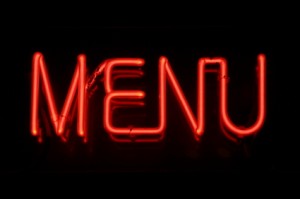 You’ve finished your restaurant meal and plunk down your cold hard cash or rectangular piece of plastic. You’re paying for your restaurant meal, but do you feel as though what you ate was what you really wanted?
You’ve finished your restaurant meal and plunk down your cold hard cash or rectangular piece of plastic. You’re paying for your restaurant meal, but do you feel as though what you ate was what you really wanted?
We often overlook the fact that restaurants are businesses and their income comes from what they sell to you. The money they make needs to cover their costs including the food they purchase, laundry and utility bills, rent, cleaning supplies, salaries, glasses, dishes, and so much more.
The Menu And The Mark-Up
The menu is the restaurant’s calling card and its main selling tool – it’s used to convince you to buy what the restaurant has to sell. The way a menu is arranged and how it looks and is written can make or break a restaurant.
The mark-up on the items on the menu is often between 350 and 400%. If the ingredients for a dish cost $3, the dish will probably end up being priced at about $12 — so dishes made with pricier ingredients will, in most cases, cost more.
But most restaurateurs are savvy and will adjust prices to what customers will pay. Most customers, for instance, won’t plunk down $50 for a 10 ounce steak, so menu items are balanced for profit and loss. A restaurant might lose money on steak by pricing it at a lower mark-up, but then make up for it with the mark-up on popular items with less costly ingredients — like pasta and pizza.
Think About What You Pay For Food In The Supermarket
To put things in perspective, think about how much you pay for food when you go grocery shopping. Pasta and rice cost very little, good steak and sushi grade fish cost a whole lot more. In a game of checks and balances that ultimately is reflected in the prices you see on the menu, good executive chefs monitor and leverage every product that comes through their doors.
Food that isn’t sold during earlier meals gets repurposed (ever wonder about the soup of the day, the stew, or the hash?). Good chefs can make those dishes sound delicious and taste wonderful – while, at the same time, marking them up and putting them on the menu as fabulous specials that sell out.
Do you eat out? This is the first in a series of consecutive posts about decoding restaurant menus. Keep checking back for more information that might help you with your restaurant choices.

Leave a Reply